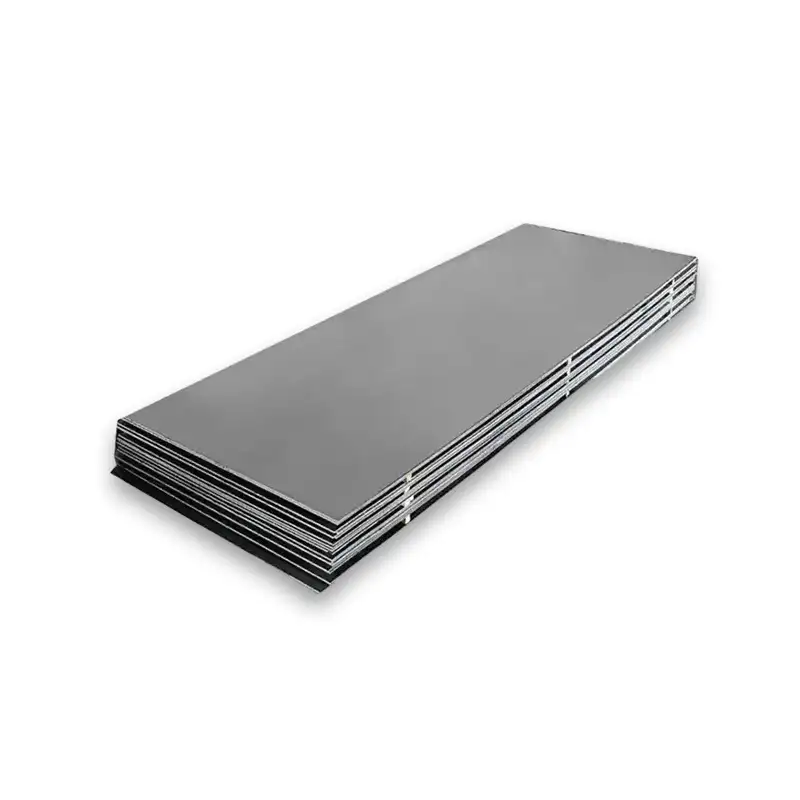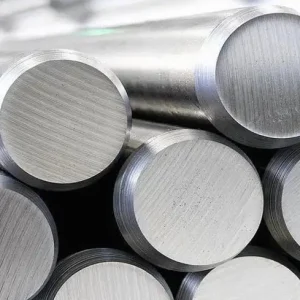A709 / S355J0W is a high-strength structural carbon steel plate with improved atmospheric corrosion resistance (weathering behaviour), routinely specified for bridge components, heavy structural members, containers and outdoor fabrications where long-term aesthetics and lower maintenance are required. In short: choose A709 grade 50W / S355J0W when you need a 355 MPa minimum yield plate with industry traceability, weldability and a built-in rust patina that reduces the need for painting in many outdoor applications.
What is ASTM A709 / S355J0W Carbon Steel Plate?
A709 is an ASTM specification developed for structural steels used in bridges. The “50W” (or simply the grade equivalent S355J0W in European nomenclature) denotes a yield strength level near 345–355 MPa plus the “W” suffix which indicates an improved atmospheric-corrosion (weathering) variant. S355J0W is the EN/European designation for an atmospheric-corrosion resistant S355 grade with no impact requirement at low temperature (J0 = 0 °C impact test designation) and the W suffix for weathering. These plates combine structural strength with alloying elements (Cu, Cr, Ni, sometimes P) that promote formation of a tightly adherent protective oxide (patina).
Standards and technical references
-
ASTM A709 / A709M — the controlling American standard describing grades for bridge structural steels (36, 50, 50W, HPS types). It defines chemical limits, required mechanical tests, and inspection criteria for bridge-grade plates.
-
EN 10025-5 / EN 10155 (and national implementations) — European technical delivery conditions for atmospheric corrosion resistant steels; S355J0W is defined under these European standards and relevant national annexes. These documents set composition ranges, delivery conditions (+AR, +N), and product testing.
-
Industry cross-reference tables — equivalence matrices used by engineers and procurement to match A709 grades to S-grades (e.g., A709-50W ≈ S355J0W). Use cross-checks, not blind substitution.
(When specifying, list the exact edition/year of the standard on purchase orders — the standard year affects testing and acceptance criteria.)
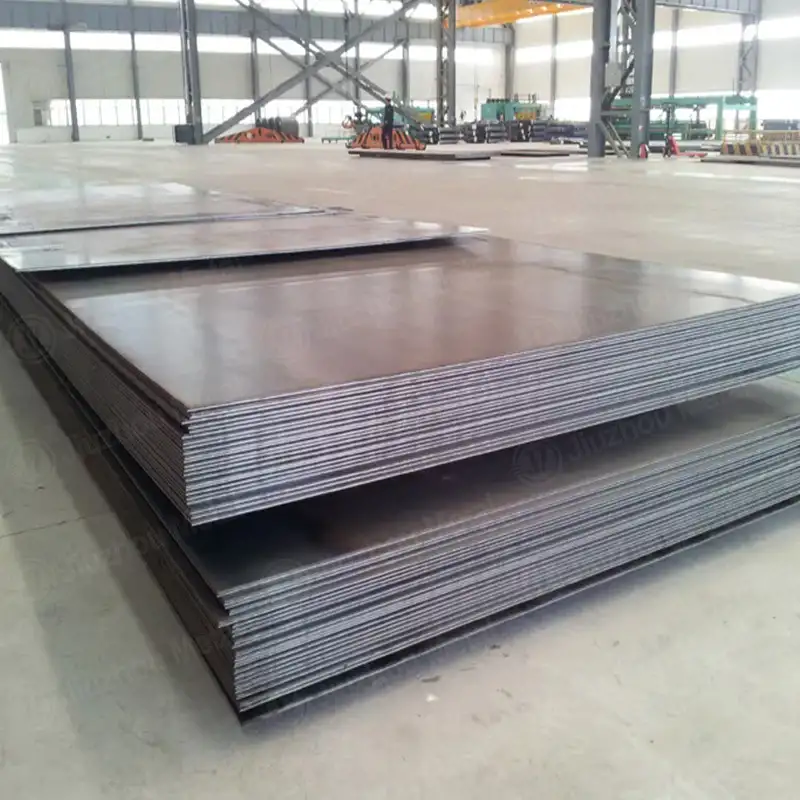
Chemical composition
Note: Standards give maximum limits or ranges. Actual mill analyses will be supplied on the mill certificate (3.1/3.2 or EN 10204). Below is a consolidated typical table assembled from EN and ASTM-equivalent ranges for S355J0W / A709-50W style material.
| Element | Typical range / limit (wt%) |
|---|---|
| Carbon (C) | ≤ 0.16 – 0.19 |
| Silicon (Si) | ≤ 0.50 – 0.55 |
| Manganese (Mn) | 0.50 – 1.60 |
| Phosphorus (P) | ≤ 0.040 (lower for some variants) |
| Sulfur (S) | ≤ 0.040 |
| Copper (Cu) | 0.20 – 0.60 (key for weathering) |
| Chromium (Cr) | ~0.35 – 0.85 (small additions assist patina) |
| Nickel (Ni) | 0 – 0.70 (may be present) |
| Molybdenum (Mo) | 0 – 0.30 (optional trace) |
| Nitrogen (N) | ≤ 0.010 |
| Vanadium / Zr (trace) | possible low ppm per spec |
Source basis: EN/EN-10155 / EN-10025-5 ranges consolidated with common supplier mill certificates. Always confirm actual certificate values supplied with each heat.
Mechanical and material properties
(Values are typical ranges; final acceptance values follow the ordering standard — mill test certificates required.)
| Property | Typical value / requirement |
|---|---|
| Minimum specified yield strength (Rp0.2) | ≥ 355 MPa (for S355 family / A709-50 equivalent) |
| Minimum tensile strength (Rm) | ≈ 470 – 630 MPa (depends on thickness & process) |
| Elongation (A, % on L0) | ≥ 20% (thickness dependent) |
| Charpy impact (where specified) | J0 = tested at 0 °C for S355J0; S355J2 would be −20 °C |
| Hardness | Typically HB < 235 (depends on process) |
| Density | 7.85 g/cm³ (standard steel density) |
| Elastic modulus (E) | ≈ 210 GPa |
Mechanical behaviour depends strongly on thickness, production method (TMCP, normalized, AR), and heat treatment. For bridge structural design, yield and tensile are the principal parameters; however, impact toughness and weldability requirements must be matched to the service environment.
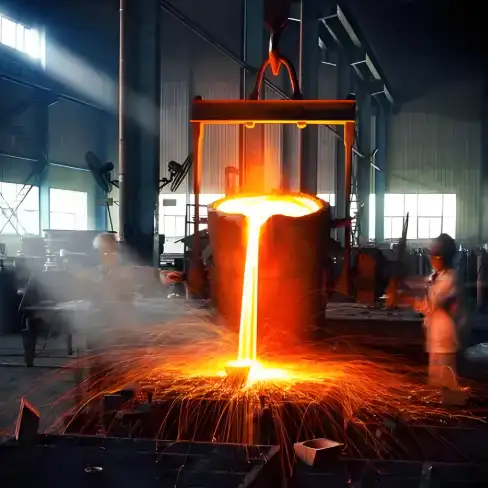
A709 / S355J0W specifications and available product forms
Common supply forms and typical commercial ranges (varies by mill and country):
| Form | Typical thickness range | Typical width / length |
|---|---|---|
| Hot-rolled plate | 3 mm – 200+ mm (common 4–80 mm) | 1,200 – 3,200 mm wide; lengths up to 18,000 mm (cut to order) |
| Coils (where offered) | 1.2 mm – ~12 mm (if coil option exists) | coil widths 1,000 – 2,000 mm |
| Cut-to-length plates | same as plate, cut to customer size | as requested |
| Plate with mill certification | any thickness | certificate EN 10204 3.1/3.2 or ASTM test report |
Delivery conditions: hot rolled +AR (as rolled), normalized +N, thermomechanical control process (+TMCP / +M) or normalized and tempered alternatives. For A709, ordering data should include grade (ex: A709 Gr 50W), thickness, delivery condition, and required certification.
What is A709/S355J0W equivalent to?
Useful cross-references (for procurement and engineering):
-
ASTM → EN: A709-50W ≈ S355J0W (EN / European weathering grade).
-
Corten / Weathering steel: S355J0W is often compared to ASTM A242 / A588 / COR-TEN B types in behaviour, but exact composition and test requirements differ — so treat “equivalent” as functional, not identical.
Always verify with mechanical/chemical certificates rather than assuming interchangeability.
Weathering behaviour and corrosion resistance
S355J0W / A709-50W is an atmospheric corrosion resistant steel. The small additions of copper, chromium and phosphorus encourage formation of a compact, adherent oxide layer (patina) when the steel is exposed to cycles of wetting and drying. That patina reduces the rate of ongoing corrosion compared with ordinary carbon steel in many outdoor, non-marine conditions.
Design notes:
-
Weathering steels perform best where cycles of wetting/drying occur (typical exterior bridge girders, towers, architectural façades with exposure to air and rain).
-
They are not recommended for continuously immersed service or in very high chloride environments (e.g., splash zones near seas) unless specific allowances are made and proven by testing.
-
Fasteners, welds, or assemblies that trap water can defeat the protective patina — good detailing is essential.
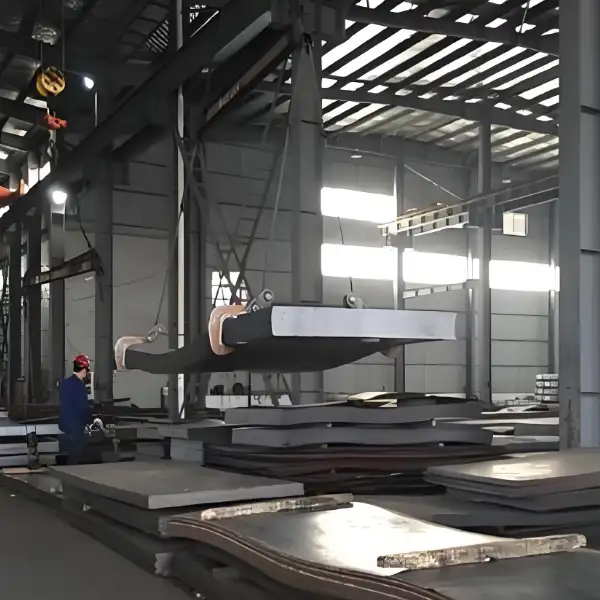
Fabrication and welding
-
Weldability: S355J0W is readily weldable by common processes (SMAW, GMAW, FCAW). Preheat and interpass temperatures should be chosen per thickness, carbon equivalent (CE) and the welding procedure specification (WPS). Low hydrogen procedures and proper consumables reduce the risk of cold cracking.
-
Heat affected zone (HAZ): For thicker plates (>20–25 mm), control heat input and preheat to preserve toughness where impact testing is required.
-
Surface preparation: For architectural applications where the patina appearance is important, avoid blasting or removing the top layer unnecessarily; consult the mill on recommended surface cleaning.
-
Machining and forming: Typical forming practice for S355 applies; heavier gauge plates will require appropriate tooling and bend radii per EN/ASTM guidance.
Always perform weld procedure qualification (WPQ) and operator qualification matching the selected standard and client acceptance.
Typical applications
-
Bridge girders, stringers, plates and stiffeners (A709 designated).
-
Outdoor structural components (towers, pedestrian bridges, architectural façades).
-
Storage tanks, containers exposed to atmosphere (when appropriate).
-
Railway components and heavy equipment frames.
Example case: many bridge specifiers choose A709-50W or HPS50W when combined long-term durability and reduced maintenance painting cycles are campaign goals.
Sizes, weight calculation
Weight formula (plate):
Weight (kg) = Length (m) × Width (m) × Thickness (mm) × 7.85 (density g/cm³) ÷ 1,000
Examples:
-
12,000 mm × 2,000 mm × 20 mm plate → 12 × 2 × 20 × 7.85 / 1,000 = 3,768 kg ≈ 3.77 metric tonnes.
-
6,000 × 1,500 × 10 mm → 6 × 1.5 × 10 × 7.85 / 1,000 = 0.707 × 7.85 = 707 kg.
Common stock sizes: 1,500–3,200 mm widths; lengths 3,000–18,000 mm; thicknesses 4–80 mm common; very thick plates available on request. Always confirm cut tolerances, flatness, and edge preparation with the mill.
2025 pricing comparison (USA, Europe, China)
Market note: steel prices fluctuate daily with scrap, HRC, iron ore and logistic factors. The table below gives typical market ranges for 2025 (expressed as USD per metric tonne, FOB mill / EXW ranges where applicable). These are market signals and should be confirmed with firm mill quotations and on the day of ordering.
| Region | Typical 2025 range (USD/tonne) for A709/S355 style structural plate (indicative) | Sources / notes |
|---|---|---|
| China (factory / EXW) | ~USD 380 – 520 / t (hot-rolled S355 / HRC derived plate ranges; some domestic sellers offer lower numbers when exports ramp). | Chinese finished-steel indices & supplier listings. |
| Europe (EU mill / ex-works) | ~USD 620 – 900 / t (higher due to energy, quality assurance, and logistics; contractual premiums for EN10025-5 certified weathering steel) | European finished-steel indices & market reports. |
| USA (domestic mill / FOB) | ~USD 650 – 950 / t (domestic plate prices reflect steel market and tariffs, with bridge-grade plate sometimes carrying additional premium) | US mill and market trackers. |
Interpretation and purchasing tips:
-
China often offers the lowest installed mill price (EXW/FOB), but total delivered cost (duties, inland transport, inspection, lead time) can narrow the gap.
-
Weathering plates and certified bridge grades can carry small premiums versus generic S355 plate because of additional testing, atmospheric corrosion requirements and traceability.
-
For projects with strict project QA (third-party inspection, material traceability), request EN 10204 3.1/3.2 or ASTM equivalent mill certificates and a sample batch test report.
(Sources used: SteelBenchmarker historic price summary, TradingEconomics HRC series, supplier market listings — consult mills for firm quotes.)
FAQs
-
Q: Is S355J0W the same as COR-TEN?
A: S355J0W is an atmospheric corrosion resistant steel related in behaviour to COR-TEN types (A/B) but you must compare specific compositions and test requirements — they are functional cousins, not literal duplicates. -
Q: Can S355J0W be used in marine environments?
A: Not generally for splash or immersion zones; chloride-rich atmospheres accelerate corrosion and may prevent protective patina formation. Consider protective coatings or different alloys for marine exposure. -
Q: What certificates should I ask for?
A: Mill test report EN 10204 3.1/3.2 or ASTM test report with heat number, chemical analysis, tensile/yield results, impact tests (if specified) and any non-destructive test records. -
Q: How does A709 differ from ordinary A36?
A: A709 grades are specifically for bridge structural steel and include higher strength grades and weathering variants (50W, HPS), with defined bridge-grade QA and sometimes higher toughness or corrosion resistance than generic A36. -
Q: Are special welding consumables required?
A: Standard low-alloy consumables for S355 may be used but choose consumables matched for composition, required toughness and to control CE; qualify the welding procedure on representative thicknesses. -
Q: What finish is usual for patina appearance?
A: Mill-scale or light cleaned surface is common; sandblasting and controlled wet/dry cycles are sometimes used in commercial weathering tests to accelerate patina formation in trials. Avoid over-cleaning for architectural patina appearance. -
Q: Does S355J0W require painting?
A: One reason to choose weathering steel is to avoid routine painting in many exterior cases — but local pollution, design detail and aesthetic needs might still call for coatings. -
Q: How quickly does the protective patina form?
A: It depends on climate — months to a few years. Alternating wet/dry conditions accelerate formation; constant wetness slows the protective film growth. -
Q: What is the delivery time from mill?
A: It varies — standard stock plates can ship in days to weeks; special sizes or heavy thickness may require weeks. For Chinese factory shipments, include inspection and export processing time in lead time planning. -
Q: How do I calculate plate weight?
A: Use Weight (kg) = L(m) × W(m) × t(mm) × 7.85 ÷ 1,000. See earlier section for examples.
MWAlloys supply proposition
MWAlloys manufactures and stocks A709 / S355J0W structural plates in China and offers:
-
100% factory price (direct mill / factory sales), reducing middleman markup;
-
Mill test certificates (EN 10204 3.1/3.2 or ASTM equivalent) provided with every heat;
-
Stocked sizes for fast turnaround — typical stock enables domestic loading within 5–14 days (subject to order quantity and inspection);
-
Custom cut-to-size, edge prep and secondary processing available (shotblast, NDE, drilling).
For international projects we provide FOB/EXW quotes, third-party inspection options (LR, DNV, SGS), and consolidated logistic support. Contact MWAlloys sales with your drawing, heat number requirement, and delivery term to receive a firm mill quote and availability schedule.
How to specify on purchase order
When ordering, include:
-
Standard and year (e.g., ASTM A709/A709M — Grade 50W (or A709-50W) OR EN 10025-5 / EN 10155 — S355J0W, delivery condition +AR / +N).
-
Thickness, width, length, tolerances.
-
Required mill certificate type (EN 10204 3.1/3.2).
-
Required mechanical testing (tensile, yield, impact temperature where relevant).
-
Surface finish and packing requirement.
-
Inspection: third-party inspection (if required) and acceptance criteria.

